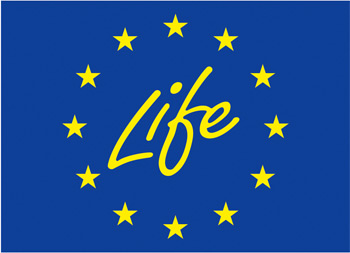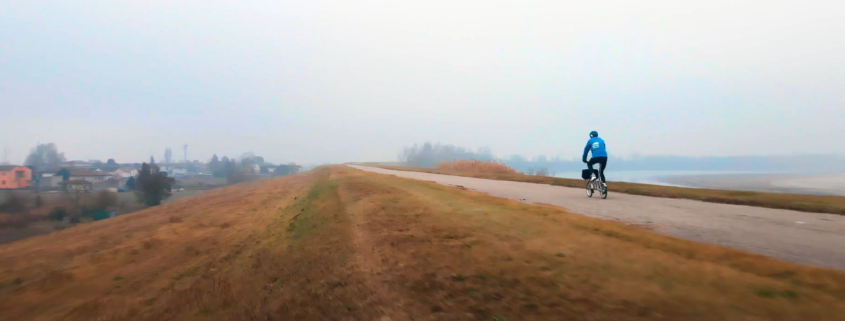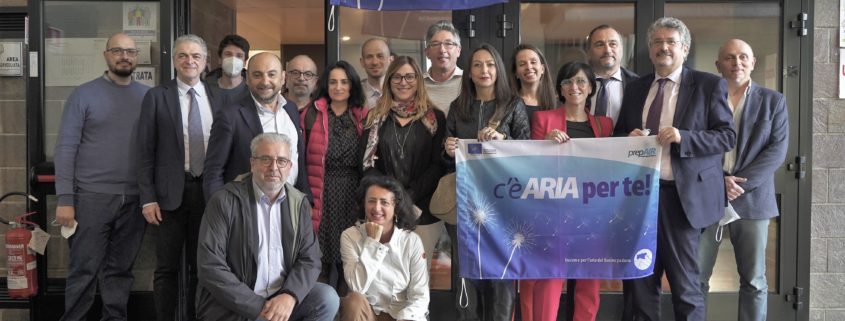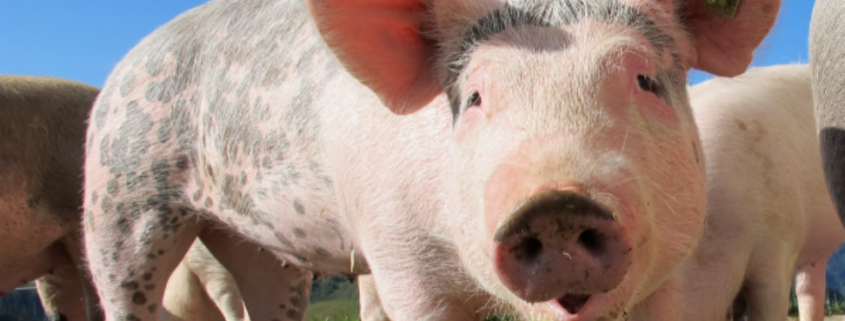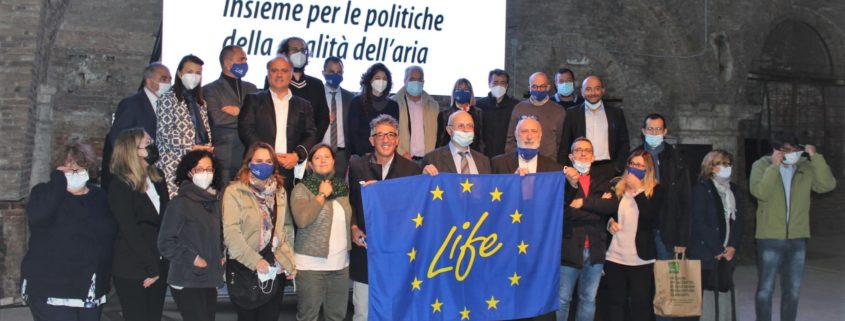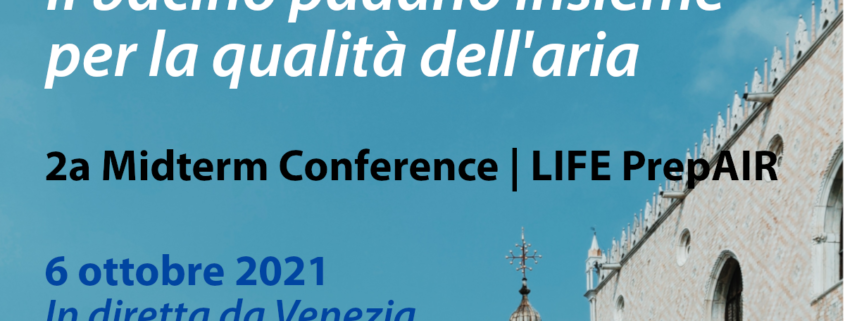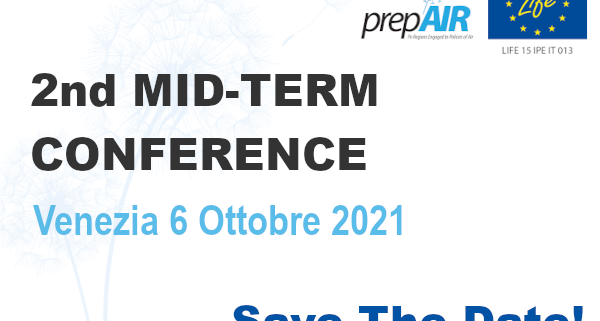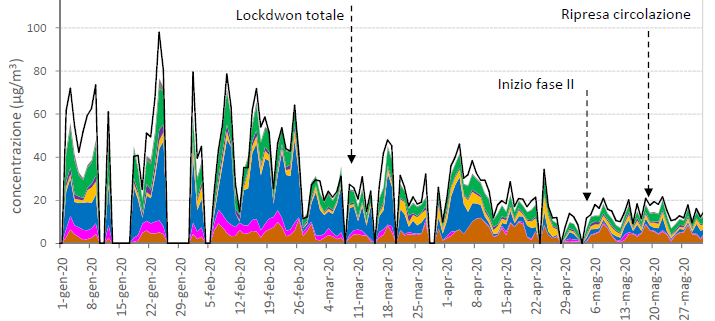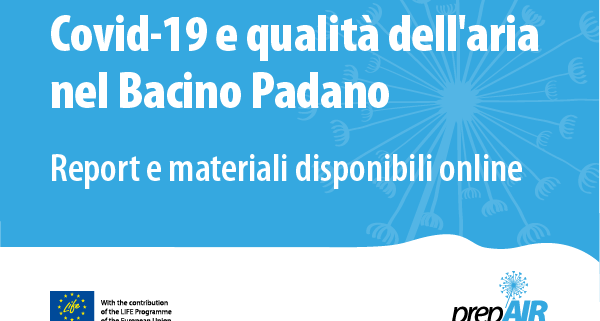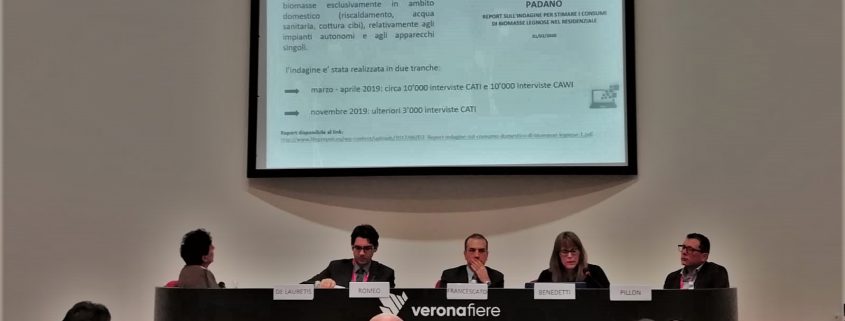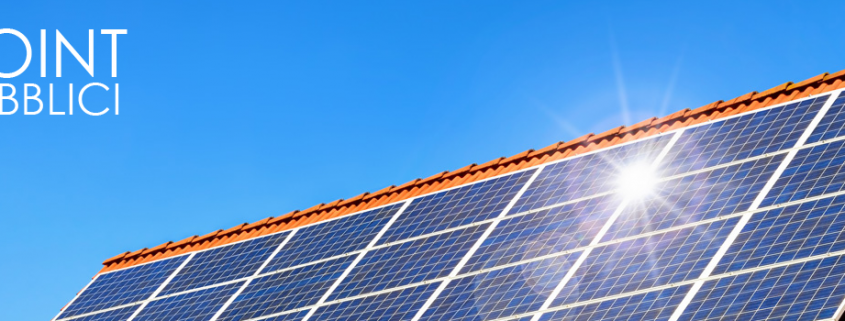The video storytelling of LIFE PrepAIR project. Watch the trailer and contact us to host a premier show of the full movie!
Agriculture plays a central role in the air quality issue of the Po valley, this has emerged more and more in recent years. The issue has been studied in depth within the LIFE PrepAIR project.
After five years of work, with the project entering its final stage, the results of the pillar dedicated to agriculture and the one dedicated to emission evaluation and monitoring were presented during the conference “Agricolture and Air quality”, that took place in Bologna in the presence of the project partners and speakers hosted by Regione Emilia Romagna, Prepair’s project leader. More than 250 participants followed the event remotely.
The results presented shows the great effort that the project partners carried out to deepen and study the mechanisms that regulate the relationship between agriculture and air quality. These mechanisms depend on a large number of variables and factors. Emissions, for example, depend on the chemical composition of the manure and fertilizers used, on the biological cycles of the animals, on the variables related to the composition of the soil and on the meteorological and climatic variables, as well as on the absorption capacity of the plants.
Particular attention has been paid to fine aerosol (PM 2.5) produced by ammonia emitted by livestock waste (in the relaying, storage and spreading phases) if not managed properly.
The “BAT Tool”, a web-based app developed by Prepair’s project to estimate ammonia emissions into the atmosphere, is now available and free to use. It allows to calculate emissions starting from data on techniques applied in intensive pig farming and poultry. The analyzes carried out so far shows that this tool has a considerable potential in developing technological assessments, both at a company and territorial level. To further develop this potential will have to be supported by the harmonized use of data sources, relating to the actual structure of the farms in the different territorial contexts.
The speakers that intervened during the day explored the issues and proposed solutions to reduce ammonia emissions thanks to the use of good practices, derived from the investigations and experiments. Since 2019 BAT Tool has been used almost five thousand business simulations, an impressive given important result; since January 22, Bat Tool Plus is available, an upgraded version of the original tool. One of the future objectives is therefore to expand the application of the BAT-Tool to assess the application of different techniques in the different emission phases, to quantify the achievable emission reduction in each scenario.
The proposal is based on the identification of defined and achievable ammonia emission reduction targets related to the application of each specific good practice. The predetermined reduction target can therefore be chosen by each farm within the available BATs.
As a conclusion, a round table took place with the participation of the Directors of the Environment and Agriculture of the Po Valley Regions. From the discussion emerged the importance to include specific measures in the policies that are under definition at national and European level. However the current situation requires more resources then the ones currently available and an active involvement of the national government.
Furthermore, as a result of the debate it was confirmed that, in some regions, nitric fertilizer are already buried within 12 hours from the spread: thus the envisaged measures are applicable, even if mediation is necessary to overcome the resistance of smaller companies worried by the economic impact of the measures. After all, as the project managers stated, “if we do not anticipate the burial time we have no effect”. And they add: “thirty years ago, water protection plans made it clear that agriculture can affect the quality of the water resource. Today we understand that it can affect the air. But there is a problem of resources: we must understand on a national scale that there is a real emergency, that we are on very important orders of magnitude. And we must act in a not too long time, otherwise we will spend more sanctions than we would with new investments “.
In conclusion all the speakers underlined that the added value of PrepAir is precisely the creation of relations between persons and institutions that was possible because of the joint work and has been an absolute unprecedent in the sector. In other words, the project has led the partners’ Environment and Agriculture offices to talk to each other in an increasingly stable and convinced way: creating a fundamental synergy to better address the problems linked to pollution, and to proceed toward the future jointly.
Dowload the slides of the conference (mostly in Italian)
Watch the picture gallery.
The “Plus” version of the BAT-Tool is now available, the application to evaluate the emissions of livestocks now applies to cattles and can estimate greenhouse gases emissions in greater detail (in accordance with IPCC 2006 tier 2 method). A new territorial model allows to carry out a simulation on a regional scale, extending the scope of the application once limited to a single farm/company.
The new features add up to the previous ones: estimation of green house gases, gaseous emissions (ammonia, nitrogen oxides, methane and carbon dioxide) and potential release of nitrogen compounds into water by animal farms (originally pigs and poultry only).
To use the software, simply access the site https://bat-tools.datamb.eu, after registering, and click on the “Ammonia Greenhouse Gas Module” icon. The previous version of the BAT Tool, will still remain available, but in read only mode. Each user will be able to see its own business simulations both in the “basic” version of the application and in the Plus version.
The BAT-Tool Plus User Manual is available here (in Italian).
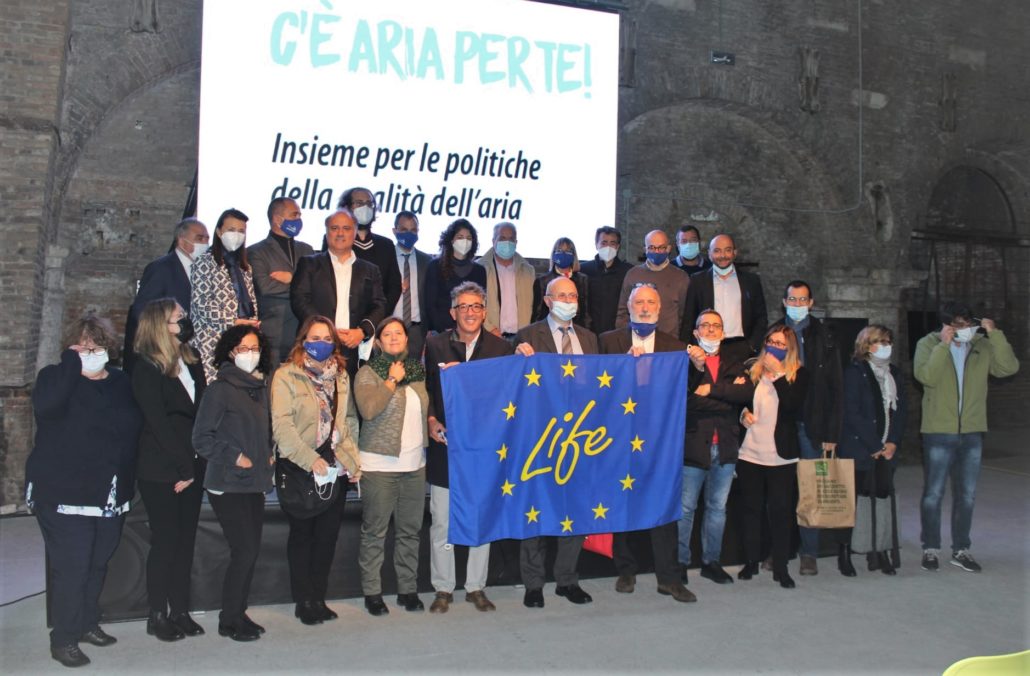
The Second Midterm Conference of LIFE Prepair Project took place on last 6th and 7th october in the beautiful location of Venice’s Arsenale: two days of debate dedicated to Air Quality issue in the Po basin. During the first day, Prepair’s partners explored the work done so far by the project and analyzed strategic issues and policies linked to the common struggle against air pollution. The second day was dedicated to the domestic consumption of Woody biomass (one of the thematic pillars of Prepair Project).
The two days work stressed out the role of Prepair Project in the creation of a community of experts that provides dependable data to support policymakers in the development of a common strategy toward air quality improvement in the Po basin. During the roundtable that ended the first day of conference, the regional Councilors for environment (Irene Priolo for Emilia Romagna, Raffaele Cattaneo for Lombardy, Matteo Marnati for Piedmont and Gianpaolo Bottacin for Veneto) called for a greater commitment of the national government in the Air quality issue of Po Basin.
The technical focus of the first day has inevitably been the particular state of air quality during 2020: COVID-19’s lockdown allowed to observe Po basin in an unprecedented condition, almost completely lacking of vehicular traffic. The analysis carried out by Prepair’s working group during the lockdown registered a substantial drop in some pollutants’ concentration (NO2, NO, Benzene) , but not PM10. Despite the strong drop of traffic, over the threshold values of aerosol concentration have been observed during the lockdown. The dynamic of Aerosol is strongly influenced by meteorological conditions and by the presence of precursors. To comply to the limit values of PM10 concentration in the Po valley it is necessary to reduce both aerosol primary emission and its precursors (NOx and NH3). To achieve this goal Air Quality plans and strategy foresee to intervene simultaneously on all emission sources and on the whole Po basin.
Freight logistics is going to be an area of primary importance in the near future: it is necessary to reduce long distance road transport, optimize medium to short distance logistics and substitute old commercial vehicles with low impact ones.
As far as concern Agriculture and Animal farming, it is necessary to find a new balance between production of nitric compound from cattles and the receiving capacity of farms, introducing a depuration system to eliminate excessive loads combined with digestors. It will be essential to apply to animal farms measures integrating food, quality of the barn and innovative spreading technics.
Regarding industry and energy production, it will be necessary to apply Best Available Technologies, reach zero fossil fuels consumption, improve research on clean technologies and manage the impact of electric mobility on energy demand.
Last but not no least, as far as concern Domestic heating it is necessary to implement a general improvement of energy efficiency in new and existing buildings, substitution of old biomass heaters and fireplaces with either newer and more efficent biomass plants or less polluting technologies (heat pump).
Download the presentation of Prepair Midterm conference | 6th October
The second MId-term Conference of LIFE PrepAIR, online from Venice
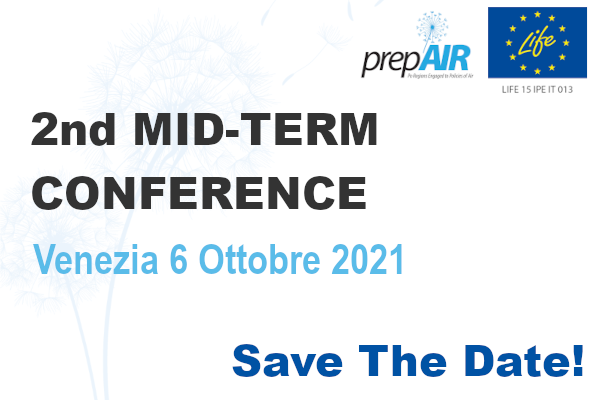
The Second Mid-Term Conference of PrepAIR, the integrated LIFE project that tackles air quality issue in the Po basin and Slovenia, will take place in Venice the 6th of October 2021. The conference will be structured in two sessions – morning and afternoom, and will be hosted by project partners Regione Veneto and ARPA Veneto.
The conference on residential biomass consumption will take place the following day, October the 7th in the same location.
More info on logistics, agenda and registration soon!
The English summary of the third report on “COVID 19 and Air Quality in the Po Valley is now available for download.
In the first months of 2020, the health crisis due to the COVID-19 pandemic and the consequent policy measures adopted have generated a drastic and sudden reduction of some sources of atmospheric pollution. The conditions were useful to test some actions to tackle air pollution in one of the most polluted areas of Europe, and, unfortunately, also dramatically affected by the health emergency.
In this context the PrepAIR Steering Committee decided to carry out a specific study to evaluate the effect of lockdown measures on air quality. The analysis was conducted in three different phases and this work represents the synthesis of the third one in which the chemical composition of PM10 is examined in the special stations of the project. The study aims to verify and consolidate the preliminary conclusions of the two previous reports and to obtain new elements of knowledge necessary to set up the next planning phase in terms of air quality.
The study was conducted by analyzing in particular two periods: pre-lockdown (January 2 – March 9) and lockdown (March 10 – May 18). To fight the rise of infection two DPCM (Prime Minister Decrees) put in place strictly national lockdown measures on 9th and 11th of March 2020. Lockdown restrictions have begun to be eased across Italy the 26th of April with a recovery of limited activities and the cessation of national restrictive measures on traffic within regional boundaries.
Click here to download the third report’s english summary.
The first two report are available here.
Today february 19th, ARPA Veneto, the curator of the survey on “Residential consumption of Woody biomasses in the Po Basin”, presented its report in Verona at Progetto Fuoco exibition.
The survay aim at updating to 2018 the assessment of woody biomasses consumption in the domestic sector for the Po basin territory.
A first session of the survey took place last spring, involving more then 20000 families. Last autumn the survey was integrated with a second set of 3000 interviews.
Besides the estime of the biomass consumption, the survey investigates other aspects of the domestic use of woody biomass: the sources of supply, the habits of the users (frequency of use, ignition method, stacking time before consumption, manteinance) and the propensity to buy more efficent devices.
According to the survey’s results, users of biomass in the Po Basin are approximately the 22% of the residents, with a minimum value of 14% in Lombardy Region and a maximum of 45% in Province of Trento.
As far as concern the diffusion of different types of devices, approximately 480 thousand pellet stove are in use in the Po Basin, 470 thousand open fireplace, 460 thousand closed ones and 990 thousand traditiona firewood stoves. The survey estimates approximately 150 thousand biomass boilers, a third of which burning pellet.
Most widespread types of devices are those using air as a heat transfer fluid. Open fireplaces, which represent the lowest energy efficiency typology, are still very common in Lombardy and Emilia-Romagna.
Total consumption estimated by the survey is consistent with the results of the national ISTAT 2013 data but with substantial variations: it exceeds ISTAT’s by 25% for pellet and it is lower than 20% for firewood.
The full report of the survey is available here.
The Public Building Infopoint is online, a portal dedicated to public servants to support energy renovation of public building in all aspects: technical, financial and management.
Infopoint was implemented by LIFE Prepair project partners within the Energy Efficiency action, with Emilia-Romagna Region coordinating the activities.
The portal is structured like an ideal path to the energy renovation intervention: form initial planning/programming, to monitoring and communication of the achieved results.
According to this locgic Infopoint is structured in 5 “Phases”:
- Planning-Preliminary acions
- Tendering
- Financing
- Energy performance
- Management
For each of the phases, a public officer can find a description of the topic and a set of operative tools that will grant a valid support to the management of the procedure. For each tool a list of applicable regulations is available.
Specific paragraphs are dedicated to Green Public Procurements requirements and available funds.
Visit the Infopoint here (in italian): http://info.lifeprepair.eu/
Social Media
LIFEPREPAIR
February 2017 – December 2024
Budget: 16.805.939 € with a co-financing by the EU of 9.974.624
Leadpartner: Emilia-Romagna Region, Directorate General for Territorial and Environmental care
SUPPORTED BY
